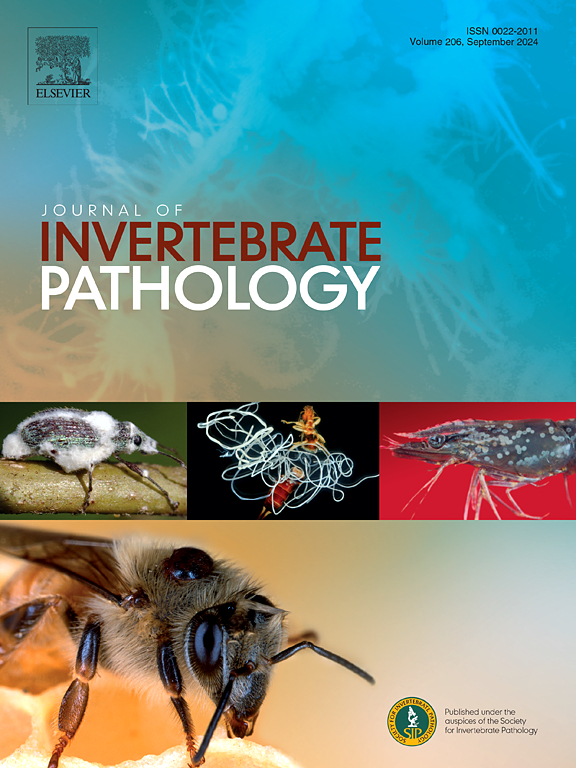Entomopathogenic nematodes: Commercial use and future perspectives
IF 2.4
3区 生物学
Q1 ZOOLOGY
引用次数: 0
Abstract
The 100 years of research, development, commercialization and use of entomopathogenic nematodes (EPN) since their discovery in the 1920s have seen impressive progress. Nowadays, many EPN products, based on a relatively limited number of EPN species, are commercially available in most world regions. This paper presents a review of EPN commercialization and examples of EPN use in field crops such as maize and in agroforestry ecosystems. It demonstrates how EPN have become an important tool in biological control of insect pests offering many advantages over chemicals. These include farmer and consumer safety, minimal damage to natural enemies, no problems with pollinators, and no environmental pollution. All of these attributes are essential for an advanced and sustainable integrated pest management strategy. We explored future potential of commercialization and adoption of EPN-based biocontrol products. The future may lie in several advances: i) The ability to tailor the use of EPN to broad as well as to local agricultural needs. ii) Enhancing their shelf life and efficacy through genetic improvements. iii) Refining application technologies. iv) Improving mass production (including machine learning using production data). v Reducing production and delivery costs, considering EPN as safe agents and therefore reducing registration burdens. Vi) Finally, expanding their use to a larger market such as to new pest species and crops. With continued research and innovation, EPN could become a cornerstone of sustainable pest management strategies in an increasing number of countries.

昆虫病原线虫:商业用途和未来展望。
自20世纪20年代发现昆虫病原线虫(EPN) 以来的100年 研究、开发、商业化和使用取得了令人印象深刻的进展。如今,基于相对有限数量的EPN物种的许多EPN产品在世界大多数地区都可以买到。本文综述了EPN商业化的进展,并介绍了EPN在玉米等大田作物和农林生态系统中的应用实例。它证明了EPN如何成为害虫生物防治的重要工具,与化学品相比具有许多优点。其中包括农民和消费者的安全,对天敌的损害最小,不影响传粉媒介,不污染环境。所有这些特性对于先进和可持续的虫害综合治理战略至关重要。我们探索了未来商业化和采用epn为基础的生物防治产品的潜力。未来可能取决于若干进展:i)能够根据广泛和当地的农业需要调整紧急方案的使用。ii)通过基因改良提高其保质期和功效。(三)细化应用技术。iv)改进量产(包括利用生产数据进行机器学习)。v降低生产和交付成本,将EPN视为安全药剂,从而减少注册负担。Vi)最后,将它们的使用扩大到更大的市场,如新的害虫物种和作物。随着不断的研究和创新,EPN可以成为越来越多国家可持续虫害管理战略的基石。
本文章由计算机程序翻译,如有差异,请以英文原文为准。
求助全文
约1分钟内获得全文
求助全文
来源期刊
CiteScore
6.10
自引率
5.90%
发文量
94
审稿时长
1 months
期刊介绍:
The Journal of Invertebrate Pathology presents original research articles and notes on the induction and pathogenesis of diseases of invertebrates, including the suppression of diseases in beneficial species, and the use of diseases in controlling undesirable species. In addition, the journal publishes the results of physiological, morphological, genetic, immunological and ecological studies as related to the etiologic agents of diseases of invertebrates.
The Journal of Invertebrate Pathology is the adopted journal of the Society for Invertebrate Pathology, and is available to SIP members at a special reduced price.

 求助内容:
求助内容: 应助结果提醒方式:
应助结果提醒方式:


